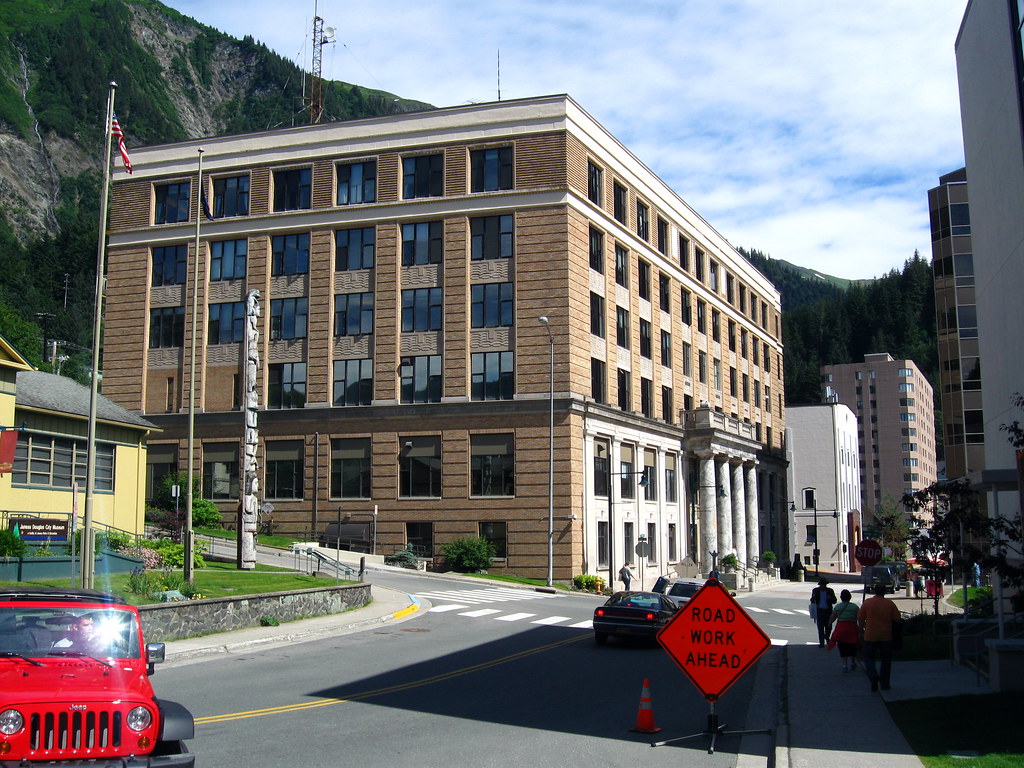It was time to clear my list of unwritten articles again. While doing that I noticed several of them involved state capitals, or their capitol buildings. Well, I’m not sure what the “usual” State Capital trivia might be much less the unusual. Nonetheless, let’s consider this an article on topics that the average layperson may not know. Naturally, the always astute 12MC audience probably knows many of these peculiarities already. Even so I’m hoping everyone will walk away with at least one new bit of information.
Highest Altitude State Capital

I would imagine that the preponderance of the general public might think of Denver as the highest state capital as a matter of reflex. After all, Denver has long touted itself as The Mile High City. Parts of it do measure up to a mile (1.6 kilometres) above sea level or even a little more. However, Santa Fe, New Mexico blew that figure out of the water. It reaches an elevation of 7,199 ft (2,134 m) above sea level. I consulted an altitude calculator and measured the New Mexico capitol building (map) at 7,005 ft (2,135 m) at the actual seat of government. That still bested Denver by a remarkable amount.
If I were to hand out an award for the capitol that looked least like a stereotypical capitol I’d probably have to give it to Santa Fe too. Of course this would be a subjective determination. The capitol didn’t have a dome or many of the traditional architectural flourishes observed elsewhere. It was also the only ROUND capitol building in the United States, “designed to resemble the Zia Sun Symbol when viewed from above.” That was bonus trivia.
A State Capital with Odd Governance

It would seem to make sense that the seat of any state government would not be beholden to a local government. At the national level in the United States, the District of Columbia was created as an independent jurisdiction removed from any state for that very reason. In 49 states, the state capital city also serves as the local county seat of government. Michigan was the only exception.
Lansing (map), the capital of Michigan fell primarily into Ingham County, with a tiny sliver in Eaton County. However, Lansing was not the county seat of either county; Mason was the county seat of Ingham and Charlotte of Eaton. It came about as fallout from an unsuccessful attempt to locate the state capital in Mason:
“In 1836 Charles Noble knew that Michigan would be seeking a central location for a new capital when it became a state. He purchased an area of forest, cleared 20 acres (81,000 m2), and founded Mason Center. The ‘Center’ was soon dropped. In 1847, however, the state chose Lansing Township 12 miles (19 km) northward to be its capital due its potential for water power. Noble managed to make Mason the county seat instead.”
So the odd arrangement was a consolation prize for a pioneering settler.
State Capitol is the Tallest Building in the State

There was one — maybe two with an asterisk — state capitol buildings that were the tallest buildings in the state. The West Virginia Capitol (map) at 293 ft (89 m) in Charleston was definitely one.
That might also be true for North Dakota:
“The North Dakota State Capitol Building Tower is often lovingly referred to as ‘The Skyscraper on the Prairie’ although it is only 241 feet 8 inches tall. Locally, we like to think of it as a ‘mini skyscraper’ because of its sleek form and the fact that it happens to be the tallest manmade structure in the area.”
However, depending on what one considers a building, the tallest might actually be elsewhere. The Antelope Valley Station power plant rises to 361 feet (110 m) in Beulah, ND. Additionally a real estate developer was hoping to construct the 252 ft (77 m) Dakotah Place tower in Fargo. This “…would include a parking ramp, retail and office space, a hotel and high-end condos..”
State Capital on an International Border

This was a trick question revealed in a comment on State Capitals Meet Time Zones from August 2009. Juneau, Alaska (map) is the only U.S. state capital that borders another nation. The city and borough of Juneau unified in 1970. Naturally the unified entity filled the same physical space including a border with Canada (“The newly created boundaries of the City and Borough of Juneau consolidated the City of Douglas, the City of Juneau. and the Greater Juneau Borough.”). Good luck trying to climb the mountains to cross into Canada, though.
The Alaska State Capitol building might also be a contender for least like a stereotypical Capitol, now that I think about it.

Leave a Reply